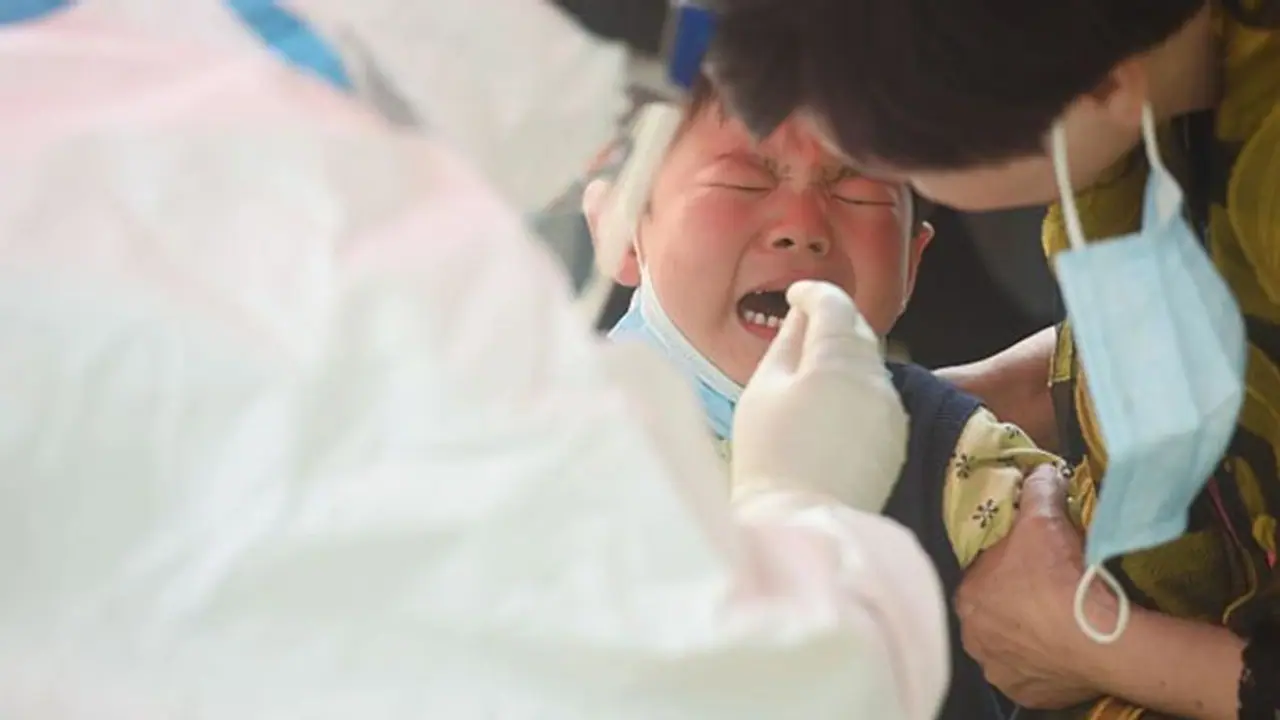Croup is a type of respiratory illness, known medically as laryngotracheitis, in babies and young children. It is characterised by barking cough, and noisy breathing. In severe cases, it can dangerously constrict breathing.
Omicron is more likely than other coronavirus variants to cause upper airway infection (UAI) among children because of their small and relatively collapsible airways, putting them at risk of heart attack and other severe complications, finds a study by researchers from the University of Colorado, Northwestern University, and Stony Brook University in the US.

Croup is a type of respiratory illness, known medically as laryngotracheitis, in babies and young children. It is characterised by barking cough, and noisy breathing. In severe cases, it can dangerously constrict breathing.
The study, published last week in the journal JAMA Pediatrics, also found that Omicron causes UAI in younger children with the mean age of hospitalised children falling from about four years and five months during the pre-Omicron period to about two years and one month during the Omicron period. The researchers conducted the study to determine if cases of UAI among children increased when Omicron became the dominant SARS-CoV-2 variant in the US.
About 384 had upper airway infection. Severe disease, defined as requiring invasive ventilation, vasopressors, or extracorporeal membrane oxygenation or death, occurred in 81 children.
The proportion of children with a pediatric complex chronic condition was not significantly different in the pre-Omicron period compared with the Omicron period, they said. Overall, 21.1 per cent of children hospitalised with both COVID-19 and UAI developed severe disease requiring measures like inserting a tube into the lungs to assist with breathing, known as intubation.
“Children with severe UAI are at risk of cardiac arrest from rapid-onset upper airway obstruction. They may require therapies typically provided in intensive care units, including frequent administration of nebulised racemic epinephrine, helium-oxygen mixtures, and intubation,” the authors of the study noted. Nebulised racemic epinephrine is typically reserved for patients in the hospital setting with moderate-to-severe respiratory distress.
“While the rate of SARS-CoV-2 pediatric UAI is not overwhelmingly high, understanding this new clinical phenotype and the potential for acute upper airway obstruction may help guide therapeutic decision-making,” they said. The Omicron strain of SARS-CoV-2 became dominant in the US the week ending December 25, 2021.
The highly transmissible variant is known to cause lower severity disease than the Delta variant, the researchers noted. This may be because Omicron replicates less efficiently in lung cells and more efficiently in the conducting airways, they said.
The researchers acknowledged some limitations of this analysis, including that children who are still hospitalised are not represented in the study, and the frequency of severe disease observed in the Omicron period may be underestimated.
Also read: Covid-19 booster shots available for all adults from April 10 at private vaccinations centres
Also read: India reports 90% surge in everyday Covid-19 cases with 214 deaths in last 24 hours
